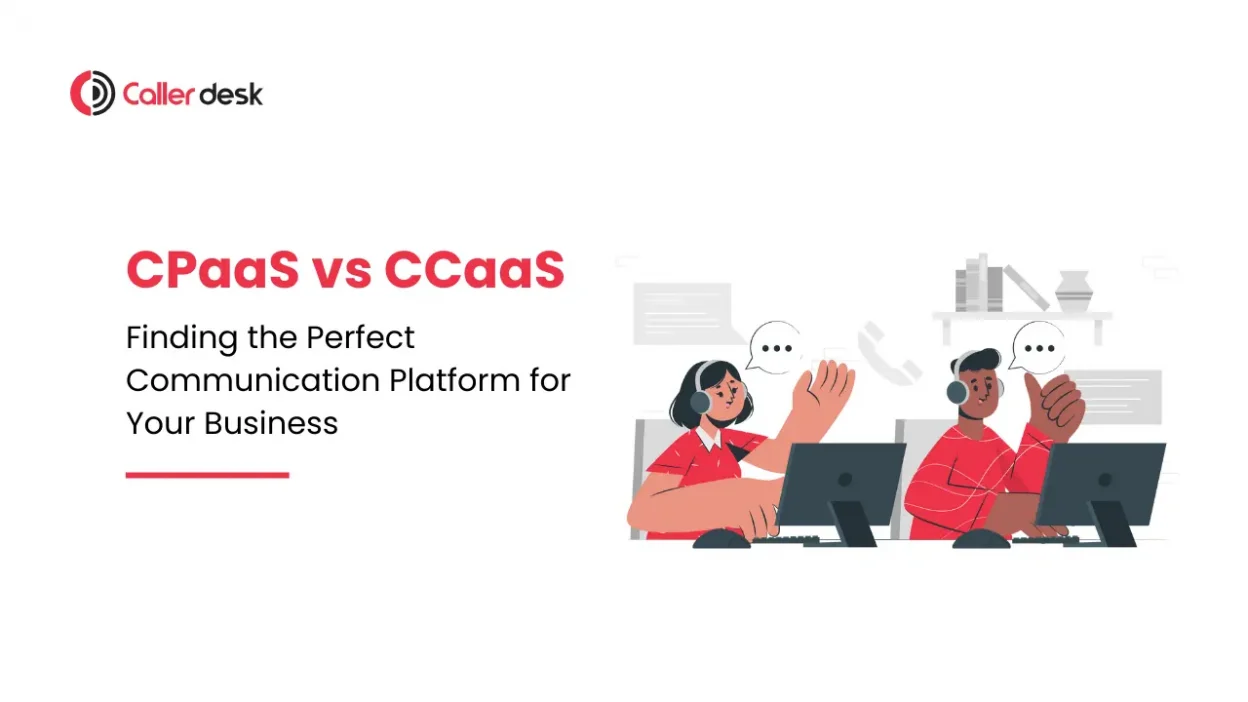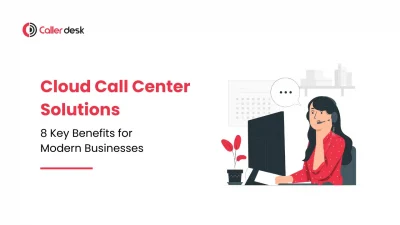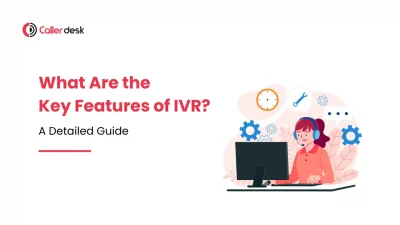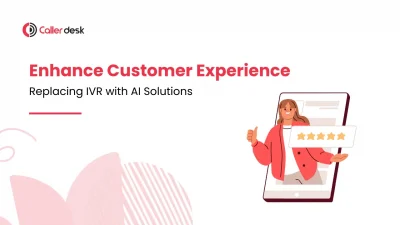Are you trying to choose the best communication platform for your business? There are so many choices available that it can be confusing. Today, many businesses are switching to cloud telephony solutions like CPaaS and CCaaS to improve customer interactions and streamline their operations. But how do you know which is best for you?
In this blog, we’ll walk you through the key differences between CPaaS and CCaaS, so you can confidently choose the best option to enhance your business communication.
What is CPaaS?
Communication Platform as a Service (CPaaS) is a cloud-based platform that enables businesses to integrate real-time communication features such as voice, video, and messaging into their existing applications without needing to build backend infrastructure. CPaaS is highly customizable and offers flexibility, making it ideal for businesses that want to tailor their communication channels to specific needs.
Key Features of CPaaS
- API-Driven: Allows easy integration of communication services via APIs.
- Scalability: The ability to grow with your company’s growth.
- Flexibility: Customizable to fit specific business requirements.
- Cost-Effective: Pay-as-you-go pricing models.
What is CCaaS?
Contact Center as a Service (CCaaS) is a cloud-based solution that offers all the tools you need to run a contact center. CCaaS supports various communication channels, such as voice, email, chat, and social media, making it perfect for customer service operations. It provides a complete set of features to help you manage customer interactions efficiently.
Key Features of CCaaS
- Omni-Channel Support: Integrates various communication channels for seamless customer interactions.
- Advanced Analytics: Provides data on customer interactions and agent performance.
- CRM Integration: Easily interfaces with Customer Relationship Management systems.
- Workforce Management: Tools for scheduling, forecasting, and managing contact center staff.
Comparing CPaaS and CCaaS:
1. Customization and Flexibility
- CPaaS: Offers extensive customization options through APIs, making it suitable for businesses needing tailored communication solutions. Ideal for companies wanting to embed communication functionalities into their existing applications.
- CCaaS: Provides a more structured and integrated approach with pre-built features designed specifically for contact centers. Customization is less flexible compared to CPaaS but offers robust tools for customer service management.
2. Use Cases
- CPaaS: Best for businesses looking to enhance their existing platforms with communication capabilities. Examples include adding video conferencing to a telehealth app or SMS notifications to an e-commerce site.
- CCaaS: Perfect for businesses that need a full-fledged contact center solution with integrated communication channels and customer service tools. Examples include customer support centers and sales call centers.
3. Cost
- CPaaS: Typically follows a pay-as-you-go model, making it cost-effective for businesses that only need specific communication features.
- CCaaS: Often comes with subscription-based pricing, which may be more expensive but includes a comprehensive suite of contact center tools.
4. Integration
- CPaaS: Easily integrates with existing applications via APIs, providing a seamless addition of communication features.
- CCaaS: Integrates well with CRM and other customer service tools, offering a cohesive contact center experience.
5. Scalability
- CPaaS: Highly scalable, allowing businesses to add or remove communication features as needed.
- CCaaS: Scales to support large contact center operations but may require more significant investment to scale effectively.
Which is Right for Your Business?
Choosing between CPaaS and CCaaS is necessary for businesses and call centers considering a switch to cloud telephony. Both options have significant advantages, but the best option depends on your specific requirements and goals. Let’s delve deeper into how each platform can serve your business.
Opt for CPaaS if:
1. You Need to Integrate Communication Features into Existing Applications
CPaaS is designed to be highly adaptable, allowing businesses to seamlessly integrate real-time communication features such as voice, video, and messaging into their existing applications. This is particularly beneficial for businesses with proprietary software or specific customer engagement tools that need enhanced communication capabilities without overhauling the entire system.
2. Flexibility and Customization Are Priorities
One of the standout features of CPaaS is its flexibility. By providing APIs (Application Programming Interfaces), CPaaS allows developers to customize communication features to fit unique business requirements. This means you can tailor the communication experience to match your branding, user interface, and specific functionality needs, offering a bespoke solution that stands out.
3. You’re Looking for a Cost-Effective, Scalable Solution
CPaaS typically operates on a pay-as-you-go pricing model, making it a cost-effective choice for businesses of all sizes. You only pay for the communication features you use, which can significantly reduce overhead costs. Additionally, CPaaS is highly scalable, allowing businesses to add or remove features as they grow, ensuring that you only invest in what you need at any given time.
Opt for CCaaS if:
1. You Need a Comprehensive Contact Center Solution
CCaaS is a full-fledged contact center platform designed to manage all aspects of customer service operations. If your business requires a robust system to handle customer interactions across multiple channels such as voice, email, chat, and social media, CCaaS is the ideal choice.It offers a centralized solution for simplifying contact center operations and improving customer service productivity.
2. Integrated Customer Service Tools and Analytics Are Crucial
CCaaS platforms come equipped with advanced customer service tools and analytics. These tools offer insights into customer interactions, agent performance, and operational metrics, enabling you to make data-driven decisions to improve customer satisfaction. Features like call recording, sentiment analysis, and real-time reporting are integral to optimizing contact center operations.
3. Omni-Channel Support is a Requirement
Modern customer service demands seamless interactions across various channels. CCaaS provides integrated omni-channel support, ensuring that customer interactions are consistent and connected, regardless of the medium. This capability is critical for businesses that want to provide a consistent and efficient customer experience across all communication channels.
Conclusion
Deciding between CPaaS and CCaaS hinges on understanding your business’s specific communication needs:
- Choose CPaaS if you prioritize integrating customizable communication features into existing applications, need flexibility, and are looking for a scalable and cost-effective solution.
- Choose CCaaS if you require a comprehensive contact center solution with integrated customer service tools, advanced analytics, and omni-channel support.



